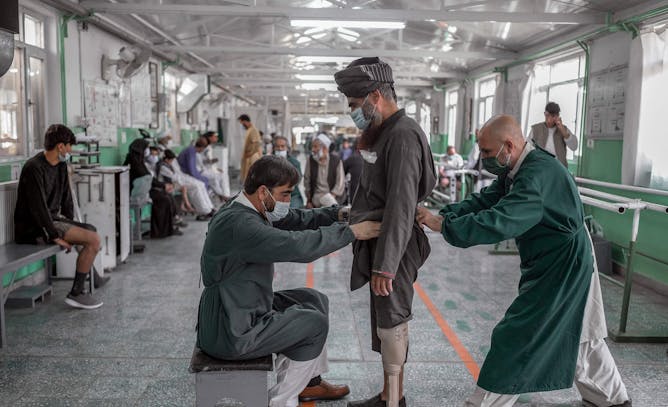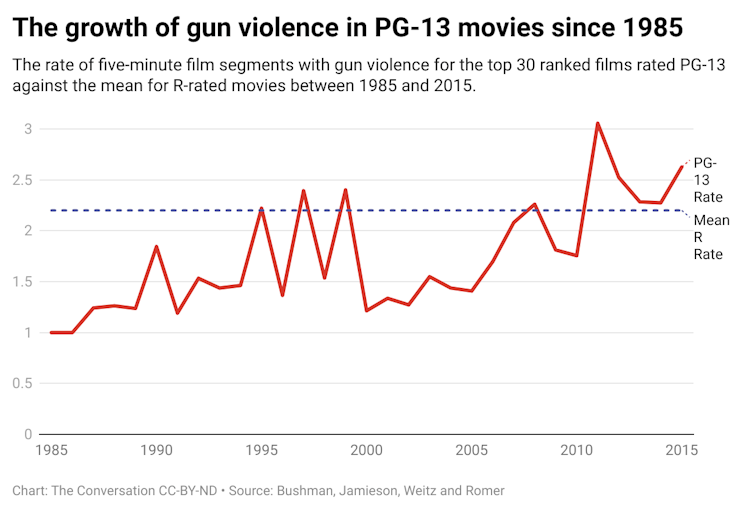|
|
|
|
Since Kabul fell without a fight two months ago, there’s been no shortage of critiques of what the U.S. accomplished militarily in Afghanistan. But billions of dollars in economic aid also gushed into that country for two decades from the United States, along with support from U.S. allies and international institutions like the World Bank.
The record for that nonmilitary assistance, which has drawn less attention in the media, is similarly grim, writes Mohammad Qadam Shah, a scholar of global development who’s originally from Afghanistan. While researching the country’s aid administration, he found it rife with “mismanagement” and “systemic corruption” – despite clear gains in education. This legacy adds to the precariousness of the country’s path forward under the Taliban, even as some
humanitarian assistance starts to flow again.
Also today:
|

|
Emily Schwartz Greco
Philanthropy + Nonprofits Editor
|
|

International Committee of the Red Cross rehabilitation center staff members assist a Taliban member on Oct. 11, 2021, in Kabul, Afghanistan.
Bulent Kilic/AFP via Getty Images
Mohammad Qadam Shah, Seattle Pacific University
A scholar from Afghanistan outlines what more than $150 billion in assistance did and didn’t accomplish in two decades following the arrival of U.S. troops un 2001.
|
Environment + Energy
|
-
Rachel Kyte, Tufts University
The world isn’t on track to avoid dangerous climate change, and this year’s climate conference, COP26, is crucial, a former senior UN official writes.
-
Sheril Kirshenbaum, Michigan State University; Douglas Buhler, Michigan State University
A recent survey finds that the pandemic made it harder for many US households to put food on the table. It also changed the ways in which people buy and store food.
-
Hannah Hunter, Queen's University, Ontario
It’s been 80 years since the last undisputed sighting of the striking black-and-white bird. The U.S. government believes the ivory-billed woodpecker is extinct — but many will keep searching for it.
|
|
Politics + Society
|
-
David Orentlicher, University of Nevada, Las Vegas
Despite a historically diverse high court, its voting rules often fail to include minority viewpoints. That could be avoided if justices decided their cases by unanimous vote.
|
|
Science + Technology
|
-
Nükhet Varlik, Rutgers University - Newark
Halloween, with its mix of the macabre and the playful, provides a moment to reflect on how closely life and death are interwoven – especially in 2021.
|
|
Health + Medicine
|
-
Karl Linden, University of Colorado Boulder
UV lights come in a variety of different wavelengths, but not all are equally effective at disinfection. Researchers tested a number of commercially available lights to find the best.
|
|
Education
|
-
Amanda Harrist, Oklahoma State University; Laura Hubbs-Tait, Oklahoma State University
A study of over 1,000 children in rural Oklahoma found that social and emotional health may be just as important as diet and exercise in reducing child obesity.
|
|
From our International Editions
|
-
Mady Ibrahim Kanté, Université des sciences juridiques et politiques de Bamako
There are few visible results on the ground after eight years of war in Mali.
-
Hisham Eldardiry, University of Washington
Communicating scientific findings is a potential route to reach common ground and avoid political tensions in the Nile region
-
Hao Tan, University of Newcastle; Elizabeth Thurbon, UNSW; John Mathews, Macquarie University; Sung-Young Kim, Macquarie University
China and the US could supercharge global climate action. But if they fail to cooperate, there will be dire consequences for all.
-
Today’s graphic

From the story, Hollywood’s love of guns increases the risk of shootings – both on and off the set
|
|
| |
| |
| |
| |

|
| |
| |
| |
| |
| |
| |
| |
| |
|
|
|
|
|
|
|